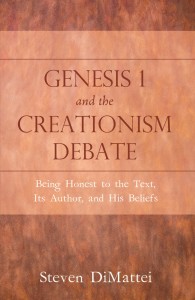The book of Deuteronomy, like many of the Bible’s books, was composed in stages and by different authors living in different historical eras. Despite this fact, Deuteronomy displays a remarkable unity in its style, theology, and message. This is largely because the various revisions and additions that the book of Deuteronomy underwent were done by a specific scribal school, which we shall label as the Deuteronomic school, and its authors the Deuteronomists. This scribal guild was active during a lengthy period of time, from the late monarchal period of the 7th century BCE, through the exilic period of the 6th century BCE, and into the Persian period of the 5th century BCE. Thus the making of the book of Deuteronomy was an accumulative process of editorial activity that transpired over three centuries.
The book of Deuteronomy was composed around a core or base text which now makes up the content of chapters 12-26. This textual composition, identified as “the scroll of the covenant,” was allegedly found during renovations to the temple under the reign of Josiah, Judah’s king from 640-609 BCE. As we shall see, this text has striking affinities with the religious and political policies implemented by Josiah as depicted in 2 Kings 22-23, and was most likely used and/or written to legitimate and endorse those policies.
There is still scholarly debate as to when this scroll was written. Some trace its roots back to a Levite circle in the north, at Shiloh, who expressed deep concerns about Israel’s lack of loyalty to Yahweh and its cultic practices worshiping other deities of Canaan. If this is the case then this scroll would have made its way to Jerusalem after the destruction of Israel in 722 BCE and there it would have received additional reworking and editing by the scribes of Hezekiah in the late 8th century BCE as well as those of Josiah’s court in the last quarter of the 7th century BCE. Others, however, see Deuteronomy 12-26 as a product of Jerusalem scribes who reused the material of the north to create a composition that buttressed the religious beliefs and ideology of Judah under king Josiah. In any case, to this base text later editorial revisions and additions were appended.
The editing and rewriting of the book of Deuteronomy ended sometime in the 5th century BCE and most likely in Babylon where many of the royal aristocracy, scribes, and priests lived during and even after the exile of 587 BCE. There, the Deuteronomic scribes reworked the traditions that were handed down to them and updated them to reflect their current exilic condition and to express their hopes of returning to the land. A tradition now preserved in the book of Nehemiah, which was written in the 4th century BCE, states that Ezra, a Levitical scribe of the mid 5th century BCE, brought with him from Babylon “the scroll of the torah of Moses” (Neh 8:1). This scroll was most probably an earlier edition of what is now the book of Deuteronomy. The 5th and 4th centuries BCE also witnessed the compilation of the Pentateuch, or the five scrolls of which Deuteronomy is the last “book.” Thus at some point in time the Deuteronomic scroll was annexed to another edited collection of scrolls, the JEP text, which was placed as a prologue to the Deuteronomic scroll.
These 5 scrolls, the Pentateuch, were kept in the temple precinct and when in the mid 3rd century BCE they were translated into Greek, the title “Deuteronomy” was giving to the last of these scrolls. We should bear in mind that this title reflects how this “book” was perceived within its now larger context—that is the 4 “books” that preceded it. Deuteronomy in Greek means “the second law” and its Greek translators saw Moses’ speech on the plains of Moab—Deuteronomy’s narrative context—as a second giving of the law. In other words, the story spanning the five scrolls now told of two givings of the law: the Horeb event preserved in the Elohist source, now parts of Exodus 19-24 and 32-33, and the giving of the law on the plains of Moab in the Deuteronomic source. Thus the Greek translators logically named the last scroll “Deuteronomy,” the second law.
As we shall see, however, from the Deuteronomist’s perspective this would have been utterly inaccurate; for there was only one giving of the laws and commandments of Yahweh, and that happened on the plains of Moab as our author repeatedly insists. Thus in a bizarre irony of literary invention, the title of this book, “Deuteronomy” or the second giving of the law, negates the Deuteronomist’s own narrative construct which adamantly stipulated that there was only one giving of the law. In fact, the title “Deuteronomy” subverts the very message of the Deuteronomist— namely that the law was not delivered at Horeb but on the plains of Moab.





